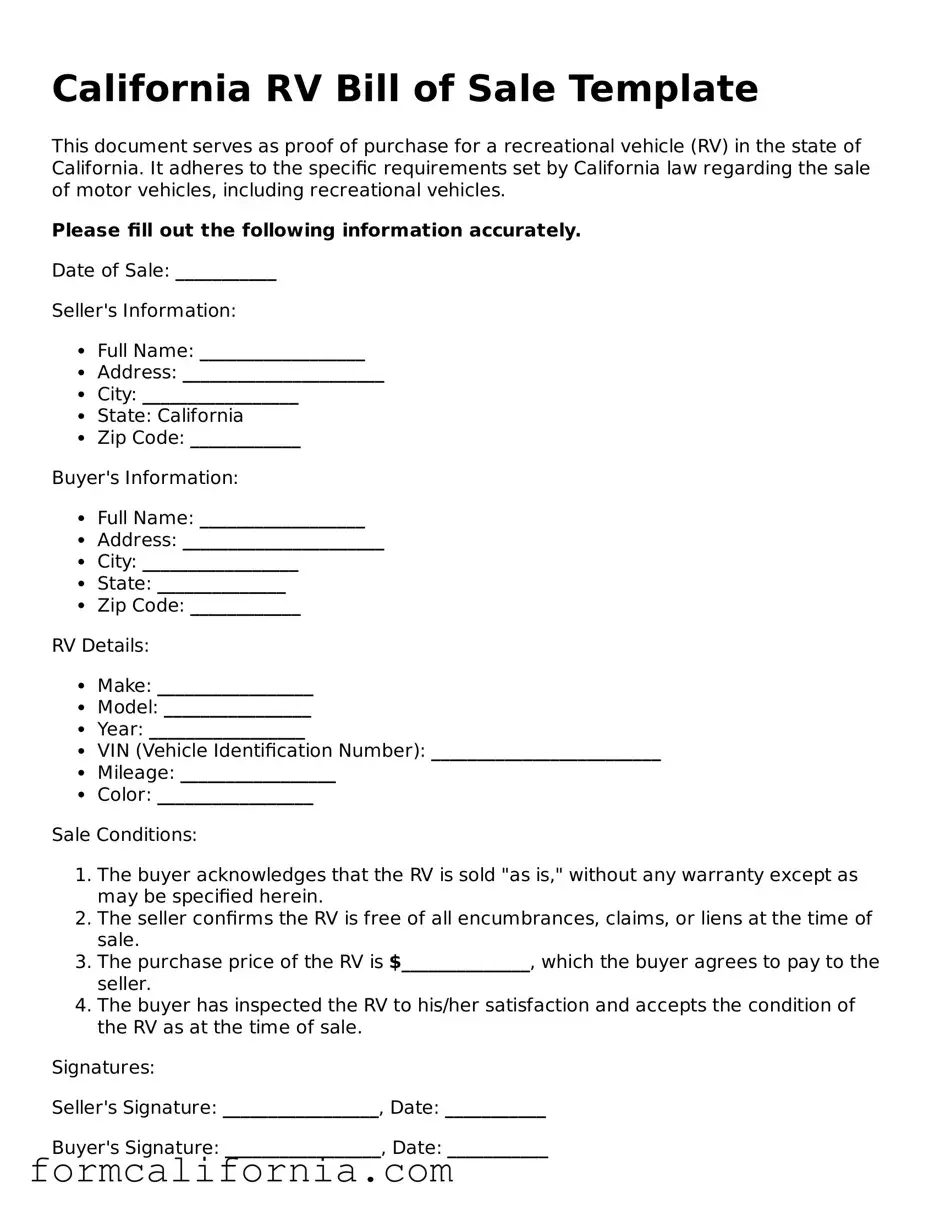The California RV Bill of Sale form shares similarities with the Vehicle Bill of Sale. Both serve as legal documents that record the transaction between a seller and a buyer, specifically detailing the sale of a vehicle or recreational vehicle (RV). They typically contain information about the seller, the buyer, the sale price, and a detailed description of the vehicle, including its make, model, condition, and vehicle identification number (VIN).
Another similar document is the Boat Bill of Sale. Like the RV Bill of Sale, this document is used to transfer ownership of a boat from the seller to the buyer. It includes essential details such as the boat's make, year, hull identification number (HIN), and the sale price. Both documents act as proof of purchase and are crucial for the registration process of the item in question with the relevant state authorities.
The General Bill of Sale is a broader document used for the sale of personal property items besides vehicles or boats, such as furniture or electronics. While not as specific in terms of technical details related to vehicles or boats, it performs the same primary function of documenting the sale and transfer of ownership from the seller to the buyer, including the description of the items sold, the sale price, and the parties involved.
The Firearm Bill of Sale closely mirrors the RV Bill of Sale by providing a legal record of the sale and transfer of ownership of a firearm. It contains detailed information specific to the firearm, such as make, model, caliber, and serial number, in addition to the details of the transaction and the parties involved. The document helps ensure the lawful sale of firearms and assists in the registration process where required.
Equine Bill of Sale documents the sale of a horse and shares commonalities with the RV Bill of Sale in terms of structure and purpose. It includes specific information regarding the animal, such as breed, color, and age, and similarly outlines the terms of the sale, identifying the seller, the buyer, and the purchase price. It serves as a crucial record for both parties and may be required for registration purposes in various scenarios.
The Mobile Home Bill of Sale is akin to the RV Bill of Sale as it documents the transfer of ownership of a mobile home. This form includes details about the mobile home's make, model, size, and identification number, along with the sale price and party information. Both forms are essential in providing a legal record of the transaction and are necessary for the title transfer process in their respective areas.
The Business Bill of Sale is relevant in the context of selling an entire business or components thereof and shares the foundational principle of documenting a transaction between a seller and a buyer. While differing in the subject of the sale, this document, like the RV Bill of Sale, includes key details such as the business assets being sold, the sale price, and the parties' information, ensuring a clear and legal transfer of ownership.
Last but notConservation easement agreement is the least, the Livestock Bill of Sale, while focusing on the sale of animals for farming or breeding purposes, operates under the same premises as the RV Bill of Sale. It encapsulates the specifics of the transaction, listing the type, number of animals, any identifying marks, the sale price, and the information of the seller and buyer. This document is crucial for verifying ownership and for record-keeping within the agricultural sector.
